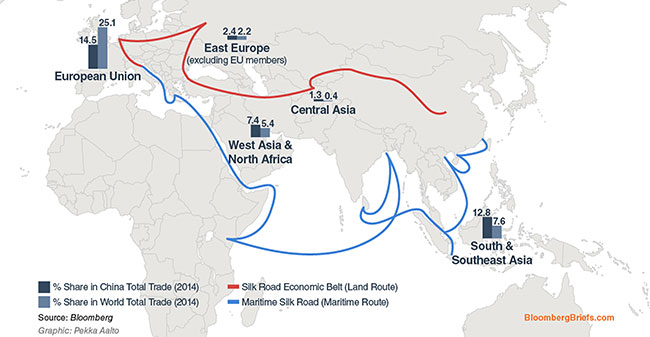The name Silk Road conjures images of caravans and desert steppes. Marco Polo was among the adventurers who navigated the ancient trading route connecting China with Central Asia, the Middle East and Europe, spreading ideas along with exotic goods like silk, porcelain, horses and gold.
China’s modern-day adaptation of the Silk Road—an initiative it calls “One Belt, One Road”—aims to revive trade across Central Asia and into Europe via a network of railways, ports and highways. It’s being described as the biggest geopolitical play since the U.S. rebuilt Europe following World War II. China bristles at the comparison, and the implication it’s seeking to spread its political influence.
What is the new Silk Road?
President Xi Jinping outlined his vision for a Silk Road Economic Belt in a low-key speech in Kazakhstan in 2013. The idea was for China to help finance transport infrastructure in Central Asia. Within months, China added a port-focused element, which it called the 21st Century Maritime Silk Road. Together, they’re known as One Belt, One Road, or OBOR.
DPM Shrestha leads Nepali delegation to China for Belt and Road...

What’s the cost, and who pays?
The push will last decades and encompass projects costing tens or hundreds of billions of dollars, so there’s room for lots of backers. China started a Silk Road Fund that’s already helped finance a hydroelectric power project in Pakistan and invested in a liquefied natural gas project in Russia. China is promoting the $100 billion Asian Infrastructure Investment Bank, the $40 billion Silk Road Fund and the joint BRICS Development Bank as alternatives to the World Bank, International Monetary Fund and Asian Development Bank.


































